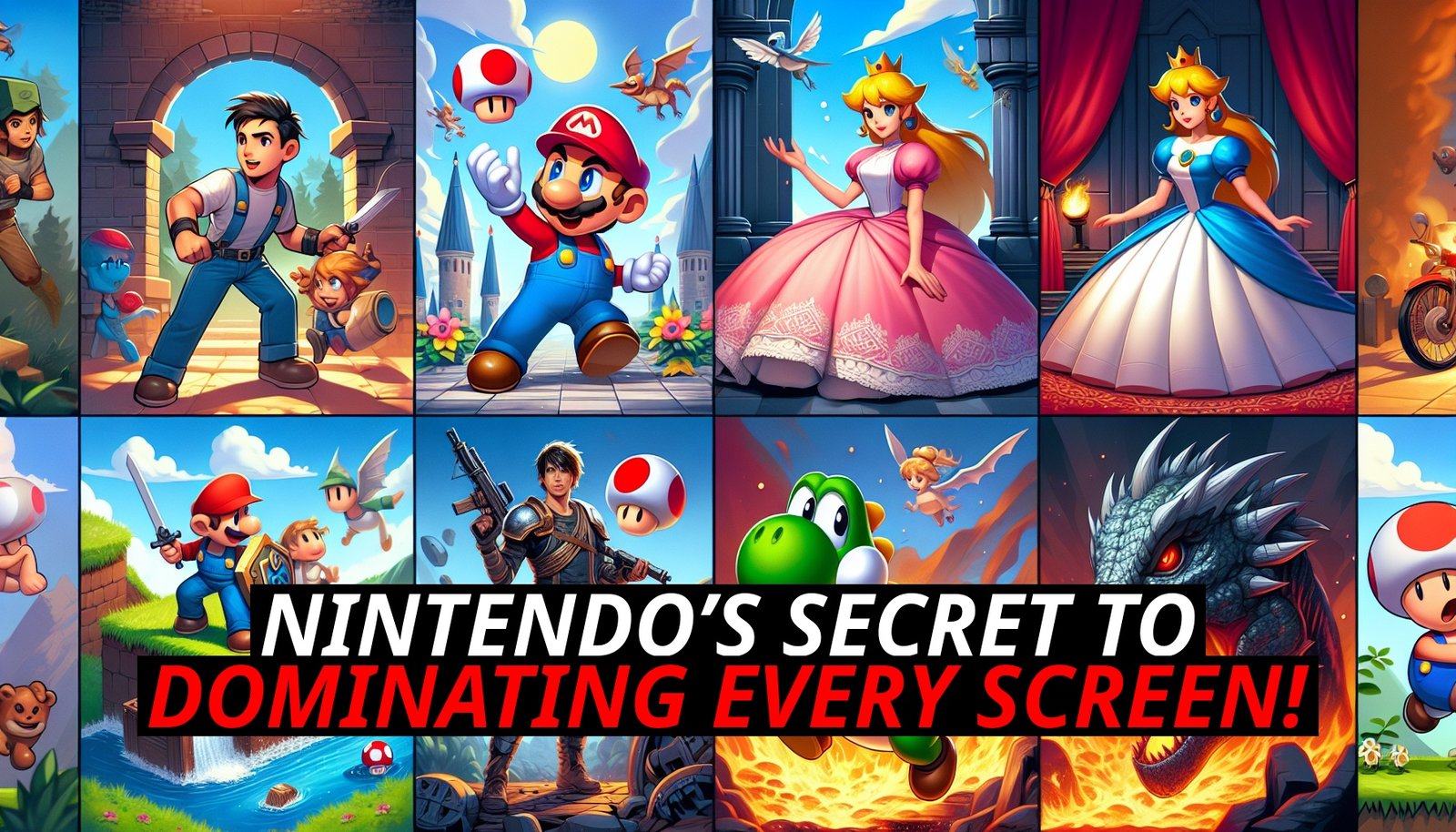Imagine you’re walking through a bustling shopping mall. As you pass by a toy store, you see a display featuring plush toys of Mario, Pikachu, and Link. Further down, a clothing store showcases t-shirts emblazoned with images of Kirby and Yoshi. In the electronics section, the latest _Super Smash Bros._ game is prominently featured, with characters from across Nintendo’s vast universe battling it out. This isn’t just a coincidence—it’s a masterclass in cross-promotion. Nintendo has perfected the art of keeping their characters in the spotlight, ensuring they remain culturally relevant and profitable across generations. Let’s explore how Nintendo’s cross-promotion strategy keeps their iconic characters at the forefront of gaming and popular culture.
The Ecosystem Of Cross-Promotion: A Symbiotic Relationship
Nintendo’s ecosystem is a finely tuned machine where each part supports and amplifies the others. Characters from one game don’t just stay confined to their original titles—they make appearances across multiple games, merchandise, and media. This interconnectedness creates a powerful web of cross-promotion that keeps each character in the public eye, no matter where you look.
Take Mario, for instance. While he’s best known for his platforming adventures, Mario’s reach extends far beyond the _Super Mario_ series. He’s the star of sports games like _Mario Tennis_ and _Mario Golf_, a seasoned kart racer in _Mario Kart_, and even a party host in _Mario Party_. Each of these games doesn’t just stand alone—they promote each other, introducing Mario to different audiences and keeping the character relevant across a variety of genres. This cross-promotion ensures that Mario is never out of sight, no matter what type of game you’re playing.
Expanding Reach Through Crossover Titles
Crossover titles are one of Nintendo’s most effective tools for cross-promotion. Games like _Super Smash Bros._ and _Mario Kart_ bring together characters from different franchises, allowing players to engage with a wide array of Nintendo’s iconic roster in a single game. These crossover titles don’t just provide fan service—they serve as a gateway for players to discover new characters and franchises.
_Super Smash Bros._, for example, is a celebration of Nintendo’s history, featuring characters from _The Legend of Zelda_, _Metroid_, _Pokémon_, and more. A player who might be unfamiliar with _Fire Emblem_ could develop an interest in the series after playing as Marth or Lucina in _Smash Bros._. This kind of exposure is invaluable—it turns casual players into fans of multiple franchises, driving interest and sales across the board.
Merchandise And Media: Keeping Characters Alive Beyond The Game
Cross-promotion doesn’t stop at games. Nintendo’s characters are also kept alive through a wide range of merchandise and media appearances. From toys and clothing to cartoons and movies, Nintendo ensures that their characters remain a part of everyday life for fans of all ages.
Pokémon is perhaps the best example of this strategy in action. The franchise isn’t just a series of games—it’s a global phenomenon that includes an animated TV series, trading card games, toys, movies, and more. Each of these elements promotes the others, creating a self-sustaining cycle of engagement. A child who watches the Pokémon anime might be inspired to play the games, collect the cards, or buy a Pikachu plushie. This level of cross-promotion keeps Pokémon in the cultural spotlight, making it one of the most profitable franchises in the world.
Cultural Relevance Through Strategic Collaborations
Nintendo’s cross-promotion strategy also extends to strategic collaborations with other brands and companies. These collaborations not only introduce Nintendo’s characters to new audiences but also ensure that they remain culturally relevant in an ever-changing market.
For example, Nintendo’s partnership with LEGO led to the creation of LEGO Super Mario sets, which blend physical play with digital interactivity. These sets don’t just appeal to fans of the Mario games—they attract LEGO enthusiasts, potentially drawing them into the world of Nintendo. Similarly, Nintendo’s collaboration with Universal Studios to create Super Nintendo World theme parks has brought their characters into the realm of real-world entertainment, allowing fans to experience the magic of Nintendo in a whole new way.
These collaborations are more than just business deals—they’re strategic moves that keep Nintendo’s characters at the forefront of popular culture, ensuring that they remain beloved and relevant for years to come.
The Financial Impact: Turning Popularity Into Profit
The power of cross-promotion isn’t just about maintaining cultural relevance—it’s also about maximizing profitability. By keeping their characters in the spotlight across multiple platforms, Nintendo ensures a steady stream of revenue from various sources.
Merchandise sales, licensing deals, and media appearances all contribute to Nintendo’s bottom line, turning their characters into valuable assets that generate income beyond game sales. The more visible a character is, the more opportunities there are for monetization, whether through toys, clothing, or even mobile apps.
Furthermore, the interconnectedness of Nintendo’s ecosystem means that a successful product in one area can drive sales in another. A popular _Super Smash Bros._ game, for instance, can boost interest in the individual franchises represented in the game, leading to increased sales of those titles and related merchandise. This cross-promotional synergy is a key factor in Nintendo’s long-term financial success.
Conclusion: The Power Of Keeping Characters In The Spotlight
Nintendo’s cross-promotion strategy is a testament to the power of keeping characters in the spotlight. By creating an interconnected ecosystem where each game, piece of merchandise, and media appearance reinforces the others, Nintendo ensures that their characters remain culturally relevant and profitable across generations.
From Mario to Link, from Pikachu to Kirby, Nintendo’s iconic characters are more than just video game stars—they are cultural icons, recognized and loved by millions around the world. Through strategic cross-promotion, Nintendo has turned these characters into enduring symbols of their brand, ensuring that they will continue to shine brightly in the spotlight for years to come.






